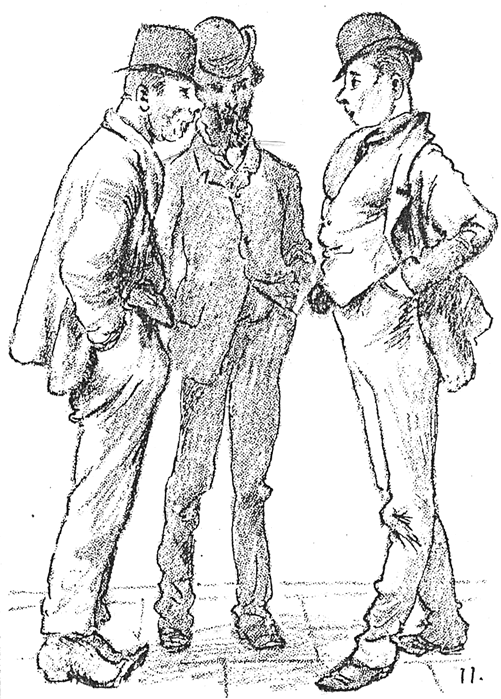Pickpockets in Swan Street
Pickpockets in Swan Street
Less serious than the scuttlers but more pervasive were the pickpockets, thieves and tricksters who would operate in Swan Street. This drawing of a trio of ‘guns’, as these petty crooks were called, was made in Swan Street in 1881.

Surprisingly, in the year when this sketch was drawn, 1881, the census does not record a manager or publican living at the George & Dragon, but there are seven occupants, all under the age of 30. Eldest is housekeeper Elizabeth Richards (29) living with her 7-year-old daughter, a 22-year-old female servant and four ‘waiters inn’, aged 15-22, all Irish-born. The group in the sketch may have been an example of what, in academic circles in the 20st century, was identified as one of the classic types of criminal organisation to emerge in these times:
‘The craft organisation, typical of people performing skilled but small-scale thefts and confidence tricks, is a small, fairly permanent team, usually of two or three men, each of whom has a specific role to play in the routinised thefts in which the team specialises. It is a team of equals and the profits are shared equally at the end of each day.’61
For many years in the 19th century there was a police station, with several cells, at the north end of Swan Street, next door to a hospital, referred to locally as the ‘Cholera Hospital’. There was also a small police office attached to the Smithfield Market. Not until 1842 did Manchester have a proper, professional police force, organised on the lines of Robert Peel’s Metropolitan Force. Nationally, the development of disciplined police forces, allied to a modernised criminal justice system, was a significant factor in the decline in crime from the end of the 1850s.62






